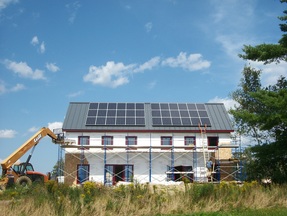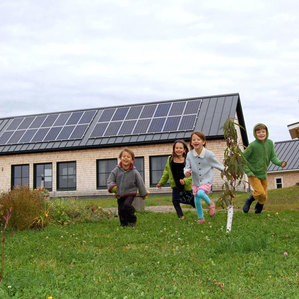 By Sarah Lozanova, Sustainability Writer Although you may dream of buying a hybrid or an electric vehicle, many of us have to drive the cars we already have, at least for the time being. Fortunately, there’s a lot you can do with driving habits and car maintenance to boost fuel economy and improve energy efficiency. Whether you want to save money or cut your carbon footprint (or ideally both!), check out these tips and learn to save green at the pump. 1. Use Your Brakes Sparingly Yes, they are a great invention, and safe driving practices involve using your brakes. Although there is certainly a time and place for applying the brakes, they can also be overused. Let the car coast before approaching stop signs, stoplights and congested areas where you will likely need to slow down. Your gas tank loves it when you lay off both the accelerator and the brake, as it saves a lot of gas. Laying off the brakes saves gasoline because most cars merely waste energy when the brakes are applied. Some cars, such as the Toyota Prius, have regenerative braking systems that capture some of the kinetic energy and transfer it to the battery, but such systems aren’t completely efficient. 2. Roll Up the Windows at High Speeds Rolling down the windows makes your car less aerodynamic, causing it to consume more fuel. This is true at all speeds, but even more so at high speeds. The exact numbers vary by the car, but the air conditioning is usually more efficient than rolling down the windows at speeds above 60 miles per hour. At lower speeds, it saves energy to roll down the windows and turn off the air conditioner, according to Popular Mechanics.  This 36-unit community may be the nation's first planned development built around Passive House green building standards. By Sarah Lozanova Even from the layout of the homes, visitors can tell something is unique about Belfast Cohousing & Ecovillage. “Where are the driveways?” one guest asks. “How strange, these houses don’t have any driveways!” Belfast Cohousing & Ecovillage (BCE) is a 36-unit intentional community on 42 acres in Midcoast Maine. Members designed the community from 2008 to 2011, before breaking ground in 2011; GO Logic, a Belfast-based design-build firm that specializes in sustainable building, designed the units and site plan and served as general contractor. The homes are clustered, and a pedestrian path, not a road, runs through the six-and-a-half-acre built area. Despite being a rural property, all the homes are located in two- to four-unit buildings and range from 500 to 1,800 square feet with one to three bedrooms. The community layout encourages social interaction, offers safety for children, and provides open space for food production, wildlife and recreation. With PV solar systems, these highly efficient homes are near net zero. PASSIVE HOUSE DESIGNS When one enters the homes, it becomes obvious that the lack of driveways is only one of many differences between these houses and the average code-built home. Despite being located in Midcoast Maine, the houses have no furnaces. Read More...  By Sarah Lozanova Our homes can be comfortable and energy-efficient: Especially if we borrow from the high-performing, effective ideas used around the world in “passive houses.” Developed by the German Passivhaus Institut in 1996, a Passivhaus is defined by core efficiency standards. What does this mean in practice? Homes built to the Passive House standard are extremely comfortable to live in—with natural daylighting, even temperatures throughout and virtually no drafts. Passive homes require 90 percent less energy to heat because energy losses are minimized with generous amounts of insulation and air sealing. The homes are heated largely by solar heat gains and internal gains from people and electrical equipment. Although fully retrofitting a home to the passive house standard is usually very costly, we can use many of the elements of passive home design to make our homes more efficient. Apply the following concepts to your home to boost comfort and reduce energy bills. Boost Winter Solar GainSouth-facing windows and, to a lesser extent, east- and west-facing windows help gradually warm our homes with solar energy. Maximizing this free energy source reduces dependence on heating systems, in turn lowering utility bills in cold climates and promoting indoor air quality. Forced air heating, for example, can carry dust with the heat as it passes through duct work, while wood-burning stoves and heating systems that use natural gas or propane can emit carbon monoxide. Wood-burning stoves also can produce breathable pollutants such as smoke and ash. Clean southern windows and remove screens. When the heating season begins, remove screens on south- and east-facing windows and wash the windows to increase your solar gains by up to 40 percent. Keep screens in the west- and north-facing windows to provide protection from the winter wind. Avoid shading southern windows in the winter. Evergreen vegetation, carports and porches can shade southern windows, hindering solar gains. In colder climates, plant only deciduous trees and shrubs (which lose their leaves in winter) outside south-facing windows, or space vegetation and structures far enough away from the house to avoid shading southern windows. Expand with a solar addition. If you are planning an addition on your home, consider adding a sunroom, which can help heat your home. Effective sunrooms face south, include lots of thermal mass, are thoroughly insulated, and include ventilation options with windows, doors and skylights. Read More... |